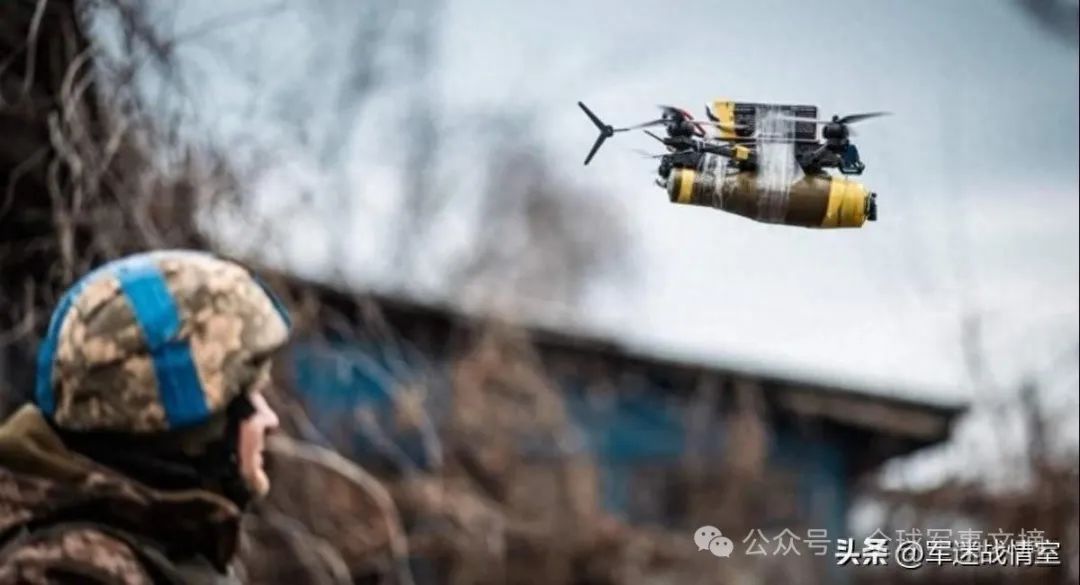The Russo-Ukrainian war, fought for 707 days, proved the strategic/tactical value of many new types of equipment with lives and money, and FPV drones are among them and have become an important factor on the battlefield, with the dynamics of their use continuing to grow this year, heralding the latest trends in the weapon's military applications on both sides.

Researchers at Tochnyi.info, a project focused on analyzing data on the Russian invasion of Ukraine, have published an article presenting statistics on the use of FPV drones by Ukrainian and Russian military forces from August 2023 to January 23, 2024.The article is based on a study of the use of FPV drones by Ukrainian and Russian military forces.

The analysis is based on open source intelligence gathered and confirmed by users known as @AndrewPerpetua, including identifying the exact location where each FPV attack occurred. Similar to GeoConfirmed's earlier analysis, the study does not give a full picture of the situation, but does provide the insights needed to identify trends and draw certain conclusions. (We also previously featured a third-party analysis of Russian and Ukrainian drone use from August through November of last year, which showed that the Russians were still not as good as the Ukrainians. So it is for your information only.)
The authors of the project divided all recorded instances into three categories: FPV strikes against infantry, defensive positions and vehicles, respectively. So far, the UAF maintains the advantage in vehicle strikes, with more than three times as many as the Russians: the UAF launched 2,057 FPV strikes, compared to 632 on the Russian side.

As can be seen from the chart above, the Russian army's numbers fluctuated between 104-154 from September to January, while the UAF's statistics show a sharp increase from 331 in September to 490 in October, then a gradual decline, but still leaving the Russian army far behind.
It has been analyzed that this decline may be due not only to the shortage of drones in the army, but also to the reallocation of some of the available resources. As we have seen, the UAF had a slight advantage in the total number of FPV strikes against enemy infantry (1,779 vs. 1,752), but now the Russians are starting to overtake the UAF, with 655 vs. 533 FPV strikes recorded in January.

What is noteworthy is the rate at which the numbers are growing, suggesting that the Russian army is trying to expand the use of drones. the number of strikes against infantry increased by 300 percent in November, and jumped again by 150 percent in December. At the same time, while the UAF's index is also growing, the magnitude is far less dramatic.
At the same time, there was a marked difference in the number of strikes against defensive positions, with the Russians leading by a factor of almost 10. Part of the reason for this may be that the UAF strategically prioritizes disrupting Russian offensives by targeting their combat vehicles, especially transport vehicles that provide logistical support for Russian operations.

More notable is the view of relevant military experts on how FPV drones have changed the modern battlefield, "While trenches once provided protection from shelling, the introduction of FPV drones, including the threat posed by drone-delivered munitions, has drastically altered the level of protection they provide to the infantry."
The overall conclusion drawn by the Tochnyi.info analysts is that the UAF currently has a slight advantage in the use of FPV drones on the battlefield (3,886 versus 2,889), but if the situation doesn't change, the Russians could catch up in the very near future - the authors note: " This highlights the need for the UAF to increase its own manufacturing output and use more advanced systems in order to stay ahead of the technological race where both sides are at the same technological level."

Previously, we also reported that Ukrainian President Zelensky announced plans to produce one million FPV drones by 2024 - these attack drones will make up for the shortage of artillery munitions in the UPDF and will also profoundly change the landscape of the Russo-Ukrainian war!

